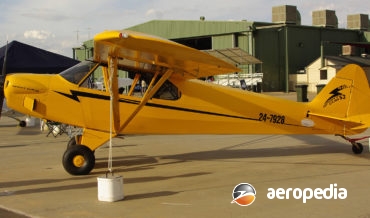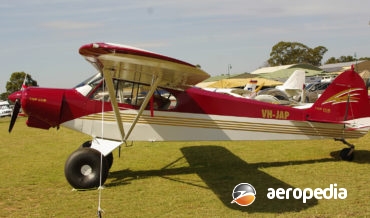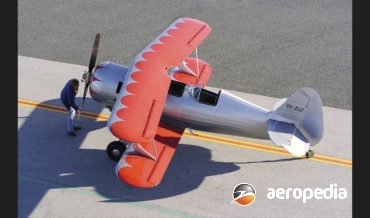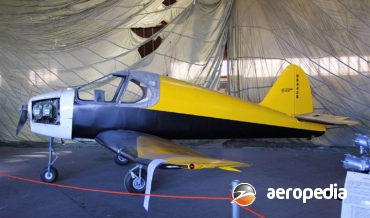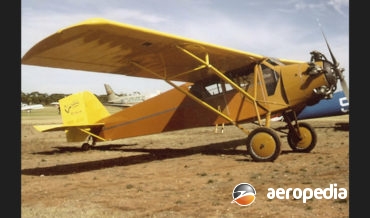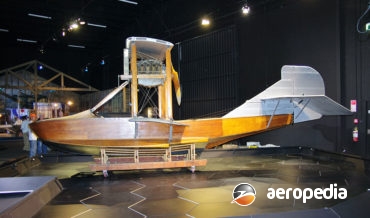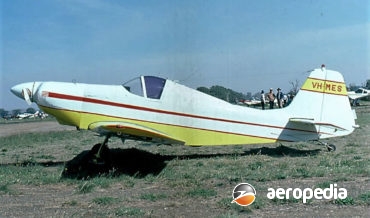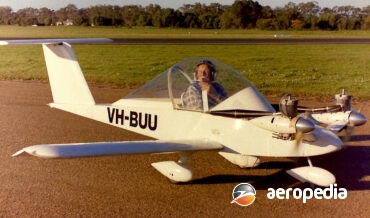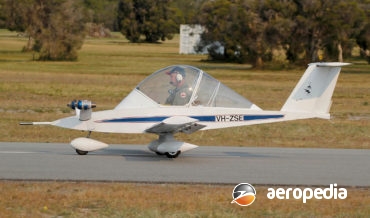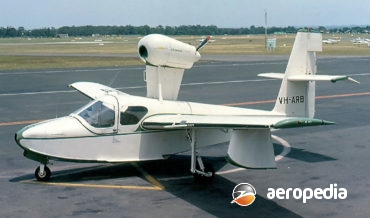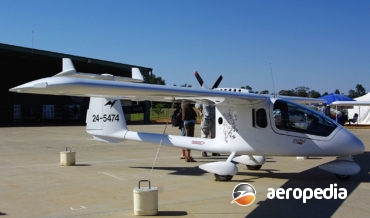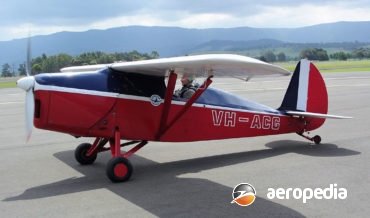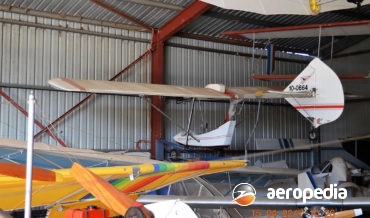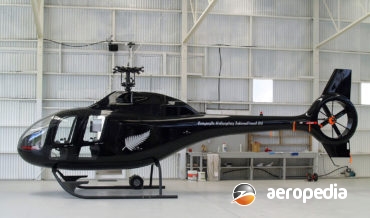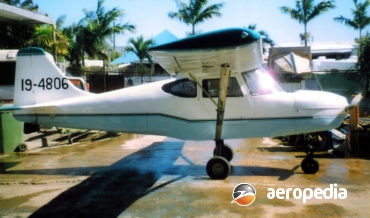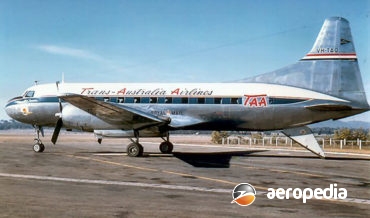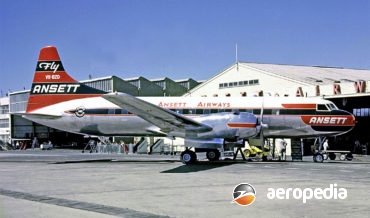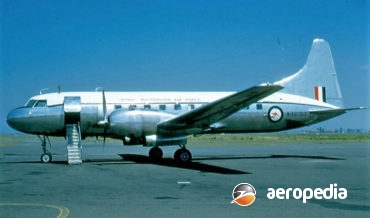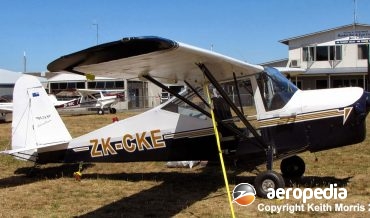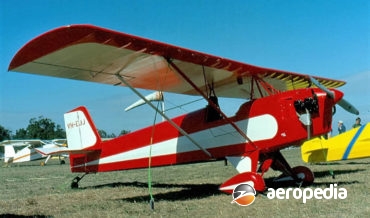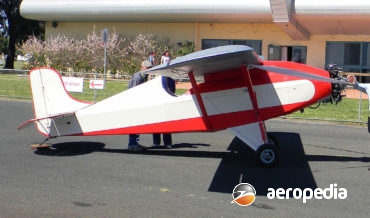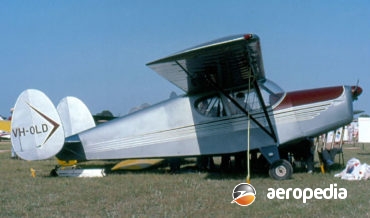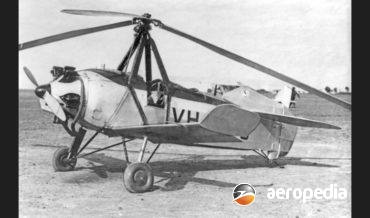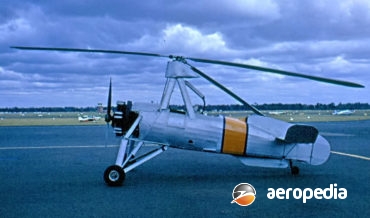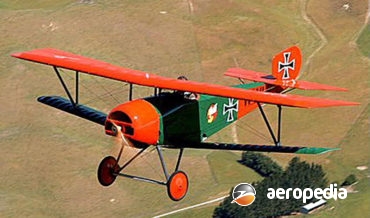David C. Eyre
The CubCrafters CC11-100 was introduced to the Light Sport Aircraft market in the United States to meet a requirement for a lower-powered variants of its range and is an entirely new aeroplane designed from the ground up making extensive use of modern avionics, design techniques and composites including carbon fibre,
David C. Eyre
- May 17, 2019
CubCrafters was founded in 1980 by Mr James Richmond in Yakima, Wisconsin to re-build and modify PA-18 Super Cubs and similar aircraft, and by 2007 more than 120 aircraft had been through the company’s re-manufacturing facility.
David C. Eyre
- May 17, 2019
The Culp Special was designed by Mr Steven Culp of Culp Specialities of Shreveport, Louisiana and is a development he made to the basic design of the Steen Skybolt to increase its aerobatic performance.
David C. Eyre
- May 17, 2019
The Culver Cadet series of light aircraft was designed by Al Mooney and built by the Culver Aircraft Company of Wichita Kansas as a two-seat small side-by-side all-wood construction light aircraft fitted with a 60-kw (80-hp) Franklin 4AC-176-D engine.
David C. Eyre
- May 17, 2019
The Currie Wot sporting biplane was designed by J R Currie in the 1930s, with the first example being built by Cinque Ports Aviation Limited in the United Kingdom in 1937.
David C. Eyre
- May 17, 2019
One of the most successful freight aircraft available to operators in the 1930s and 40s, the Curtiss C-46 Commando was produced by the Curtiss-Wright Corp in 1936 when it embarked upon the design of a transport known as the CW-20 which had 20 berths as a night sleeper transport, and
David C. Eyre
- May 17, 2019
One of a range of aircraft produced in the United States just before the Great Depression of the thirties, the Robin still sold well, with more than 700 examples produced.
David C. Eyre
- May 17, 2019
The Curtiss Seagull was a civil variant of the Curtiss MF flying boat trainer produced from 1918, the civil aircraft having a 119-kw (160-hp) Curtiss C.6 six-cylinder in-line engine in place of the V-8 unit in the military variants.
David C. Eyre
- May 17, 2019
The Full Metal Jacket is a newcomer to the light sports aircraft market and is of all-metal construction and built at Mildura, Vic, being a development of an aircraft known as The Bullet, which was a single-seat all-composite aircraft but about which little is known.
David C. Eyre
- May 17, 2019
Mr Anton Cvjetkovic, a Yugoslav emigrant to the United States, began work in May 1960 on the design of a series of light aircraft, the first of which became known as the CA61.
David C. Eyre
- May 17, 2019
Designed essentially as a touring monoplane for the eastern-block countries, but also available for sale to western nations, the Meta Sokol was built by the Avia factory of the Czechoslovakian National Aircraft Industry at Chocen.
David C. Eyre
- May 17, 2019
During 1933 Sir Charles Kingsford Smith was making preparations to make a barnstorming tour of New Zealand with his Fokker F.VII/3m VH-USU Southern Cross and a new aircraft which had been designed to his specifications by Wing Command L J Wackett.
David C. Eyre
- May 17, 2019
The prototype of the Cri Cri series, known as the MC-10, was flown for the first time on 19 July 1973 powered by two 136-cc Rowena 6507J single-cylinder two-stroke engines, and was claimed to be the “smallest twin-engine aeroplane flying” and “the only aircraft able to lift a useful load
David C. Eyre
- May 17, 2019
The Cri Cri is a cantilever low-wing single-seat monoplane designed and produced in France which has been built by amateur builders around the world and is usually fitted with two JPX PUL 212 piston engines which provide 11-kw (15-hp), one fitted to each of the wings in tractor configuration.
David C. Eyre
- May 17, 2019
The skimmer was a successful foray into the production of an amphibian for private use by the Colonial Aircraft Corp.
David C. Eyre
- May 17, 2019
Colyaer SL has been building light sport aircraft for some years, the first aircraft produced being the Martin, which was fully certified and was a two-seater with a fixed tricycle undercarriage, this model becoming available in 1999 and in its later form was known as the Martin 3.
David C. Eyre
- May 17, 2019
Colyaer SL, [construcciones Ligeras y Aeronauticas S.L.] has been building light sport aircraft for some years, the first aircraft produced being the Martin, for which three prototypes were built, one of which was fully certified and was a two-seater with a fixed tricycle undercarriage, this model becoming available in 1999
David C. Eyre
- May 17, 2019
Designed by Flight Lieutenant Nicholas Comper, the founder of the Comper Aircraft Co Ltd, the CLA7 Swift was a tiny but very efficient single-seat sporting aircraft of wooden construction, fabric covered (except for the plywood rear decking), and powered by a 26-kw (35-hp) ABC Scorpion radial engine.
David C. Eyre
- May 17, 2019
The Stingray was an early foray into the construction of ultra-light aircraft in Australia, being placed into production by Composite Engineering Pty Ltd at Camden, NSW. Fitted with a tricycle undercarriage, it was built to +6 -4 G and had max cross-wind component of 37 km/h (23 mph). Fuel consumption
David C. Eyre
- May 17, 2019
The KC-518 is a five / six seat utility helicopter aimed at the amateur-built market. It is available as a kit light helicopter of advanced design featuring fibre and Kevlar composite construction.
David C. Eyre
- May 17, 2019
This Company was based in Townsville, Qld and, in addition to producing its own designed aircraft, has been involved in the sale of ultra-light aircraft. One example is a strut-braced two-seat high-wing monoplane with a tricycle undercarriage which is fitted with a Subaru EA-81 engine with a direct drive, electric
David C. Eyre
- May 17, 2019
The Conroy Sparrow XC is an Australian designed single or two-seat light aircraft supplied in kit form to be completed in the amateur built or experimental categories. Designed by Christopher Conroy, it is one of a series of designs made available in recent years by Conroy Aircraft Components of Oxenford,
David C. Eyre
- May 17, 2019
In 1959 Continental Copters Inc of Fort Worth, Texas obtained a number of Bell 47G-2 helicopters and proceeded to convert them to operate as single-seat agricultural aircraft and the conversion became known as the El Tomcat, produced over a number of years in some numbers for agricultural work.
David C. Eyre
- May 17, 2019
The prototype of the Convair series of commercial airliners, the Model 110 (NX90653) was flown for the first time on 8 July 1946 at San Diego, being aimed at the market after World War II for the replacement of the DC-3.
David C. Eyre
- May 17, 2019
Following the widespread success of the CV-240 series, the Consolidated Vultee Aircraft Corporation of San Diego, California moved on to the development of the CV-340 series. Initially known as the CV-240A, the prototype (N3401) first flew on 5 October 1951, certification being obtained on 27 March 1952.
David C. Eyre
- May 17, 2019
Following the success of the earlier CV-240 and CV-340 models, Convair chose to continue refine the series, despite the inroads then being made into the airline market by the Rolls Royce Dart powered Vickers Viscount.
David C. Eyre
- May 17, 2019
A successful series of airliners produced in the 1950s was the Convair CV-240, CV-340 and CV-440 series, a number of which saw service with airlines in Australia, and two were operated by the RAAF VIP flight.
David C. Eyre
- May 17, 2019
The Adventurer is a single-engine two-seat light sporting high-wing monoplane built in New Zealand by Mr Bruce Cooke.
David C. Eyre
- May 17, 2019
The Baby Ace was designed in the early 1930s by O J Corben as a single-seat sporting aircraft which could be fitted with a variety of engines. Early aircraft were fitted with the 37-kw (50-hp) Salmson AD9, the Continental A40, or the 34-kw (45-hp) Szlesky.
David C. Eyre
- May 17, 2019
The Super Ace was one of a number of light aircraft designed for sporting pilots in the United States by Orland G Corben. His first design, the Ace, was first marketed in 1923 and this was followed in later years by the Junior Ace, the Cabin Ace and the Super
David C. Eyre
- May 17, 2019
Mr John Corby, a Sydney based consultant aero engineer, designed the Starlet for an English competition conducted by Rollason Aircraft Ltd in 1964.
David C. Eyre
- May 17, 2019
Design of the Mini Coupe commenced in 1968, the first flight of the prototype taking place in September 1971. In June the following year it received its US FAA Certification in the Experimental Category and the designers in Hillsboro, Oregon subsequently began the sale of kits of components and materials,
David C. Eyre
- May 17, 2019
Designed by R C Christophorides, the CH-3 and CH-4 series of light sporting aircraft was initially developed at Heston, UK, by the Chrislea Aircraft Co Ltd. The series was a development of the Chrislea LC-1 Airguard (G-AFIN) produced prior to World War II.
David C. Eyre
- May 17, 2019
Chrislea commenced construction of its CH-3 Ace (G-AKFD), designed by R C Christophorides, at Heston in 1946, this initially being a high-wing cabin monoplane with a single fin and rudder and a tricycle undercarriage, having an unusual control system with a single wheel on a universal joint replacing the conventional
David C. Eyre
- May 17, 2019
The Eagle is a high-performance biplane produced in kit form by Christen Industries Inc of Afton in Wyoming, USA. Designed for advanced aerobatic training and comfortable cross-country flying, it is also able to meet the requirements of competition standard aerobatics, having a maximum roll rate of 204 degrees per second,
David C. Eyre
- May 17, 2019
The Husky is a development of the Piper Super Cub produced by Aviat Inc of Wyoming, USA. Designed to FAR 23 standards, and certified in 1987, it is powered by a 134-kw (180-hp) Lycoming engine driving a constant speed propeller, this giving superior performance to that previously available with the
David C. Eyre
- May 17, 2019
Don Juan de le Cierva, the Spanish inventor of the first practical rotating wing, worked for many years on the development of autogyros his work only ceasing with his tragic death in an air crash in 1936.
David C. Eyre
- May 17, 2019
Following upon the success of the C.19 series, development continued. In 1932 the Pitcairn Autogyro Company in the USA developed a satisfactory method of starting the rotor with a clutch and engine-drive mechanism, and this system was incorporated in the C-19 Mk IV.
David C. Eyre
- May 17, 2019
Circa Reproductions in Canada is a company which produces plans to build 87-percent scale World War I aircraft, the aircraft design being produced by Graham Lee of Lamont, Alberta. Leading Edge Air Foils, based at Peyton in Colorado for a time provided construction kits for the designs.
David C. Eyre
- May 17, 2019
Circa Reproductions in Canada is a company which produces plans to build 87-percent scale World War I aircraft, the aircraft design being produced by Graham Lee of Lamont, Alberta.
David C. Eyre
- May 17, 2019
Recent Comments
Archives
Categories
- No categories
Categories
- No categories
Latest Posts
Newsletter

